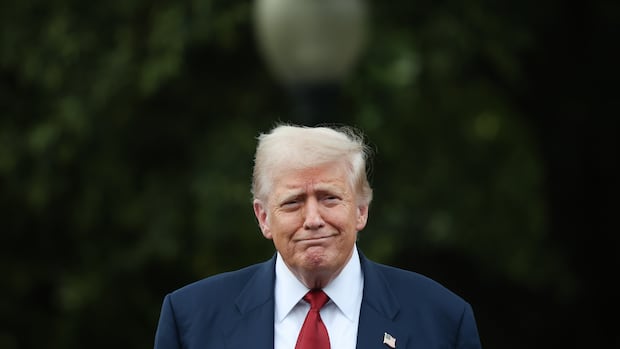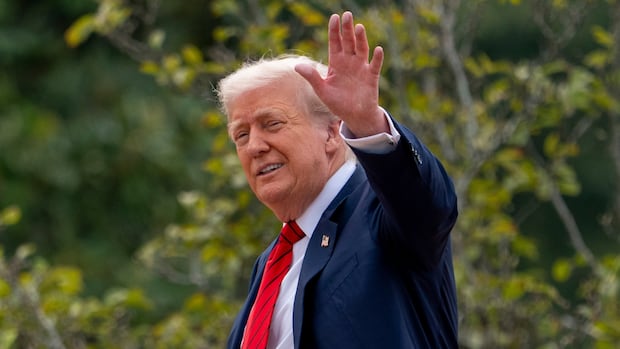Boosting domestic manufacturing is ostensibly the chief long-term goal of U.S. President Donald Trump's tariffs, but there's little evidence the sweeping import taxes will bring factory jobs to American workers at the scale he's touting.
Trump has floated multiple reasons for launching his country's highest tariffs in nearly a century, including halting the (relatively minimal) trafficking of fentanyl from Canada and generating hundreds of billions of dollars in revenue for the U.S. Treasury.
Yet Trump's most consistent pitch has been that tariffs will trigger a new golden age in domestic manufacturing, forcing companies to build factories in the U.S. and creating what he has said will be"millions and millions of jobs."
Americans who based their vote for Trump in 2024 on this promise must now wait to see if it's fulfilled. That wait could prove infinitely long.
Philip Luck, a former deputy chief economist with the U.S. State Department, says the current tariff regime doesn't make sense as a way to make industry thrive.
Trump's strategy is "going to increase costs, it's going to decrease U.S. competitiveness and it's going to make us worse off," Luck told CBC News Network on Thursday.
WATCH | Dozens of countries hit with new tariffs: 
New U.S. tariffs now in effect for dozens of countries
1 day ago
U.S. President Donald Trump's sweeping new tariffs on more than 90 countries around the world have come into effect.
But just for a moment, give Trump the benefit of the doubt, and consider a scenario where slapping high tariffs on imports actually does strong-arm companies to shift production to the U.S.
Will that also shift manufacturing jobs stateside?
'Very few workers, very automated'
The trouble is that growth in manufacturing in the U.S. no longer equates to comparable growth in employment, and hasn't for decades.
"We do [manufacturing] now with very few workers, we do it in a very automated way," Luck said."Even if we do increase manufacturing I don't know that we're going to increase jobs along with it."
Consider these two facts: The number of Americans employed in manufacturing peaked way back in 1979, and the value of U.S. manufacturing production just kept on trending upward since then — always recovering from recessionary dips and even, adjusting for inflation, hitting a record high in 2024.
Michael Hicks, director of the Center for Business and Economic Research at Ball State University in Muncie, Ind., foresees no treasure trove of jobs appearing as a result of Trump's tariffs.

Trump "walked into an economy that was seeing the largest manufacturing production in American history," Hicks said.
"That is really a testament to how productive American workers are, the quality of the technology and capital investment in manufacturing."
Hicks says dramatic gains in productivity are what's really behind the long-term decline in U.S. manufacturing jobs.
"That's due to better skilled workers. It's better automation, it's digitization," he said."The narrative that these jobs went overseas is easy to be believed, even though the data very consistently suggests that's erroneous."
Trump aimed to highlight his vision for manufacturing this week in an appearance with Apple CEO Tim Cook — a U.S. company squarely in the crosshairs of tariffs.
Apple announced a $100 billion US increase in its domestic production plans, bringing the company's promises of U.S. investment to $600 billion US over the next four years.
WATCH | U.S. businesses, consumers feeling the effects: 
Cost of Trump tariffs adding up for some U.S. businesses, consumers
3 days ago
American businesses and consumers are feeling the impacts of U.S. President Donald Trump's tariffs, with some financial reports highlighting extra costs totalling into the billions. CBC's Mike Crawley says the cost of the tariffs have been 'emerging over the past few weeks.'
Apple's plan"will bring factories and assembly lines across our country, all roaring to life" Trump told reporters at the White House on Wednesday.
"Today's announcement is one of the largest commitments in what has become among the greatest investment booms in our nation's history."
But what will Apple's $600 billion commitment actually do for employment? The company's news release promises 20,000 new jobs over the next four years. That's precisely the number of jobs Apple said in 2021 that its planned $430 billion in U.S. investments would create in the ensuing four years.
The Wall Street Journal greeted the Trump-Apple announcement with this roundup, describing the manufacturing sector as"sputtering" in 2025.
"Economic activity tied to manufacturing has shrunk for most of Trump's second term," the Journal reported.

Two key statistics back up that assessment: Five straight months of contraction in manufacturing, according to the key benchmark tracked by the Institute for Supply Management; and a net loss of 37,000 manufacturing jobs in the three months since May, according to the Bureau of Labor Statistics.
(Trump promptly fired the bureau's commissioner after the latest numbers came out.)
Will it just take more time for tariffs to bring jobs? That's not what happened over the course of Trump's steel and aluminum tariffs in his first term.
Staff of the U.S. Federal Reserve found in 2019 that any boost to steel jobs from the protective effect of the tariffs was far more than offset by job losses across the manufacturing sector as a whole, driven by tariff-related cost increases.
"Our results indicate that tariffs have been a drag on employment," their research concludes.
Dennis Darby, CEO of Canadian Manufacturers and Exporters, says automation is the only way to be competitive in the industry and that's why any new production coming online in North America uses fewer people.
"The jobs that are in the manufacturing sector today are not the jobs of the 1970s, when the U.S. had many more millions of people in manufacturing." Darby said.

